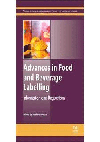Rigid packaging blends the old with the new
Distinctive shapes and dispensing functions catch consumers’ attention.

A faceted 16.9-ounce carton with a reclosable cap makes Better Half coconut cream and almondmilk stand out among non-dairy creamers on store shelves.
Distinctively shaped rigid packaging commands attention at retail. But distinctive shapes also can add functionality or project a certain desired image.
For example, Califia Farms, Bakersfield, Calif., relies on a faceted 16.9-ounce carton with a reclosable cap to set apart its Better Half coconut cream and almondmilk, its dairy-free alternative to half & half.
Califia Farms follows a similar strategy with the recent introduction of a curvy, grippable 750-milliliter bottle for its plant-based Unsweetened, Vanilla, Hazelnut and Pecan Caramel non-dairy creamers.
“Unlike anything else in the market, our new creamer bottle signals to consumers that they are about to have a ‘Califia’ experience – meaning delicious, premium, plant-powered, clean labeled — and pleasing to both the eye and the palate,” said Greg Steltenpohl, founder and CEO of Califia Farms.
Mix-in technologies have potential
One of the most interesting developments in rigid containers is the advent of technologies that make it possible to separate ingredients until mixed together just prior to consumption. Two mix-in technologies for liquid products offer potential for dairies.
The first, the patented KarmaCap, is used by Karma Culture, Pittsford, N.Y., for its shelf-stable probiotic beverage.
“The package puts the consumer in charge of a process: Peel off the protective seal at the top, push the KarmaCap button to infuse the wellness ingredients, shake to mix and initiate the health benefits,” said C.J. Rapp, CEO of Karma Culture.
The functional cap depends on customized spin-welding technology from Emerson, which was developed by the Branson Solution Lab, Danbury, Conn. An automated line with four Branson SW300 servo-driven spin welders produces the two-piece cap so the capsule holding the probiotic ingredients and the cap itself are leak-tight during distribution, mixing and consumption.
Another mix-in technology for beverages, the Clasper blow-molded bottle engineered by Plastic Technologies Inc., Holland, Ohio, combines two polyethylene terephthalate containers and a shrink label. To use, the consumer simply separates the shrink sleeve at the perforated seam between the top and bottom containers, unsnaps the bottom container from the base of the primary bottle, removes the heat seal and closure from the bottom and top components, respectively, and pours the mix-in ingredient into the product.
Cups get shape, visibility tweaks
Differentiation for cups comes in the form of a rounded bottom.
“We noticed that the KISS cup by Danone defined a new style in the yogurt marketplace that has become a veritable trend,” said Gilles Demare, upgrades and services sales director for Synerlink, a packaging machinery company in Puiseux-Pontoise, France, that is part of Barry-Wehmiller Companies Inc., St. Louis.
The other trend in cups is product visibility. See-through containers are “one way to make products look more high-end,” Demare said. The first see-through KISS cups were produced in 2014 on Arcil form-fill-seal machines from Synerlink. Now popular in the United States, the latest introduction is a 4-ounce transparent polystyrene cup with an oriented polystyrene label for Activia Curve.
Looking for a reprint of this article?
From high-res PDFs to custom plaques, order your copy today!








